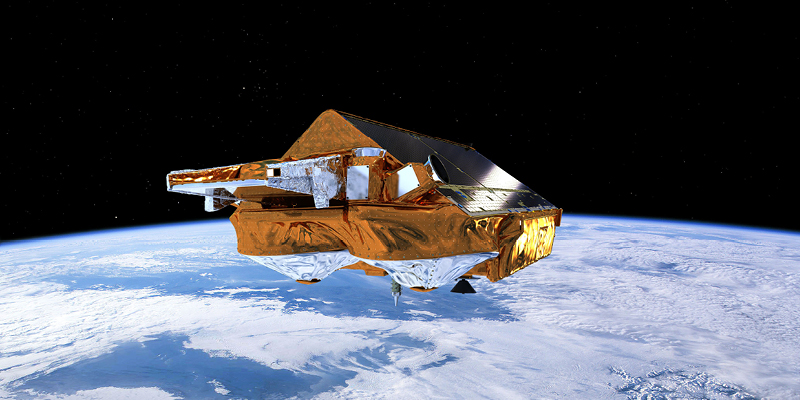Limiting risks from Arctic sea ice changes using near-real time satellite monitoring
The Centre for Polar Observation and Modelling (CPOM) is a Natural Environment Research Council (NERC) national centre of excellence with its directorate based at the University of Leeds. CPOM is now generating information on Arctic sea ice thickness in near real-time, using satellite data from the European Space Agency's CryoSat-2 mission. This is not only helping scientists to understand rapid changes in the Arctic but also providing valuable information for users of the region.

European Space Agency CryoSat-2. Picture credit ESA/AOES Medialab
CPOM studies Earth’s sea ice, ice sheets, glaciers, and polar oceans using satellite observations and numerical models, providing UK National Capability in Earth observation and modelling of the cryosphere – the frozen parts of our planet – using cutting edge techniques. Monitoring the polar regions from around 700km above the Earth, CryoSat provides radar measurements of ice that CPOM processes rapidly to give up-to-date information on Arctic sea ice thickness and volume. CPOM’s techniques ensure that information on the whole Arctic, an ocean basin or point location is available within two days of the satellite passing over the ice.
Although other sea ice data services are available, none of them provide the same information, level of detail, or timeliness as CPOM’s freely-accessible web portal. With economic growth in the Arctic estimated to be worth $100bn over the next two decades, CPOM’s timely and routine information ensures that users of the Arctic (such as shipping companies, search and rescue operations and tourism) can effectively plan and carry out their operations safely and with care. The CPOM data portal is also now providing information on ice sheet velocity for key outlet glaciers of the Antarctic and Greenland ice sheets, and measurements of Earth’s ice caps and glaciers will be available shortly.
The data CPOM freely provides demonstrates CryoSat’s potential as an operational service as well as a purely scientific mission.
Key messages:
- The Centre for Polar Observation and Modelling is now providing data on Arctic sea ice thickness and volume in near real-time through a freely accessible web portal.
- These data have important applications for anyone who needs to navigate through the sea ice, with potential to benefit a wide range of Arctic users and those researching the impacts of climate change in the Arctic.
Overview by Andy Shepherd, Professor of Earth Observations and Director of the Centre for Polar Observation and Modelling.
